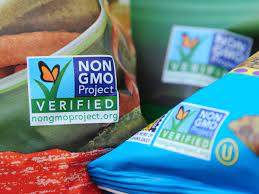The chemicals are all around us

Picture Credit: npr.org
Genetically Modified Organisms (GMO): over the past decade, these creations have become a common aspect in students’ daily lives, whether one realizes it or not. Though they are found in nearly every local grocery store across the United States, many are still unaware of what exactly a GMO is.
A GMO is a living organism that has been altered genetically inside of a laboratory. Many fruits are manipulated GMOs; the original banana crops, for instance, were specifically mutated and cloned to create what is consumed today. This was done to make them genetically resistant to different diseases that were wiping out several generations of banana farms. GMOs are used by humans to selectively choose the traits wanted for certain organisms, like making crops grow larger or more resistant to different pests. Other creatures, such as the GLOfish, are genetically modified in order to be aesthetic to the human eye.
“I think people do not really understand what GMOs are and fear them without knowing them,” Alexandra Linberg, senior, said.
In many instances, scientists use GMOs to improve daily life around the world. The Philippines is a prime example where rice was modified in order to create Golden Rice— a strain of rice that contains a supply of a pigment called beta-carotene that is full of different nutrients—which the human body then converts into Vitamin A. Many in the Philippines do not have an ample supply of foods that contain these nutrients and instead eat rice, as it is cheaper and more available. The Golden Rice is able to supply a source of these vitamins to many who had no previous access to them.
“To be honest, I do not really care. I am just hungry and like food,” Suhan Jang, freshman, said.
Though GMOs can have some human benefits, many environmental advocates are against the widespread use of it, as they can have harmful effects on the ecosystem. GMOs can cause “Superweeds” and “Superbugs” to form, which are pests that have become resistant to many pesticides, thus needing stronger and more toxic poisons to kill. On the other hand, GMOs can also lead to an increase in the use of herbicides, which, in large amounts, can negatively affect human health.
“They can be bad because they cause superweeds by weeding out those that are not best fit to survive,” Ryan Kennedy, senior, said.
Even though GMOs are everywhere, many make their choices based on biased information, judging the use of the alterations without doing the proper research. Whether one decides to take advantage of GMOs or continue to avoid them, it is vital that these choices are not formed by misinformation.
“I think there’s a lot of misconceptions with GMOs because people immediately think of strange mutated food pumped with chemicals. In reality, they are essential in creating the world we know. They can be bad, but it is ignorant to ignore the benefits GMOs provide,” Ava Banko, junior, said.
As most students do not live on a farm, the aspect of GMOs can be far off, but it is important to pay close attention to one’s diet to improve the health of the community.

Hello! Howdy-do! My name is Mia Jacobs and I am one of your Co Editor-in-Chiefs this school year! I am super excited for the year and what is to come....










